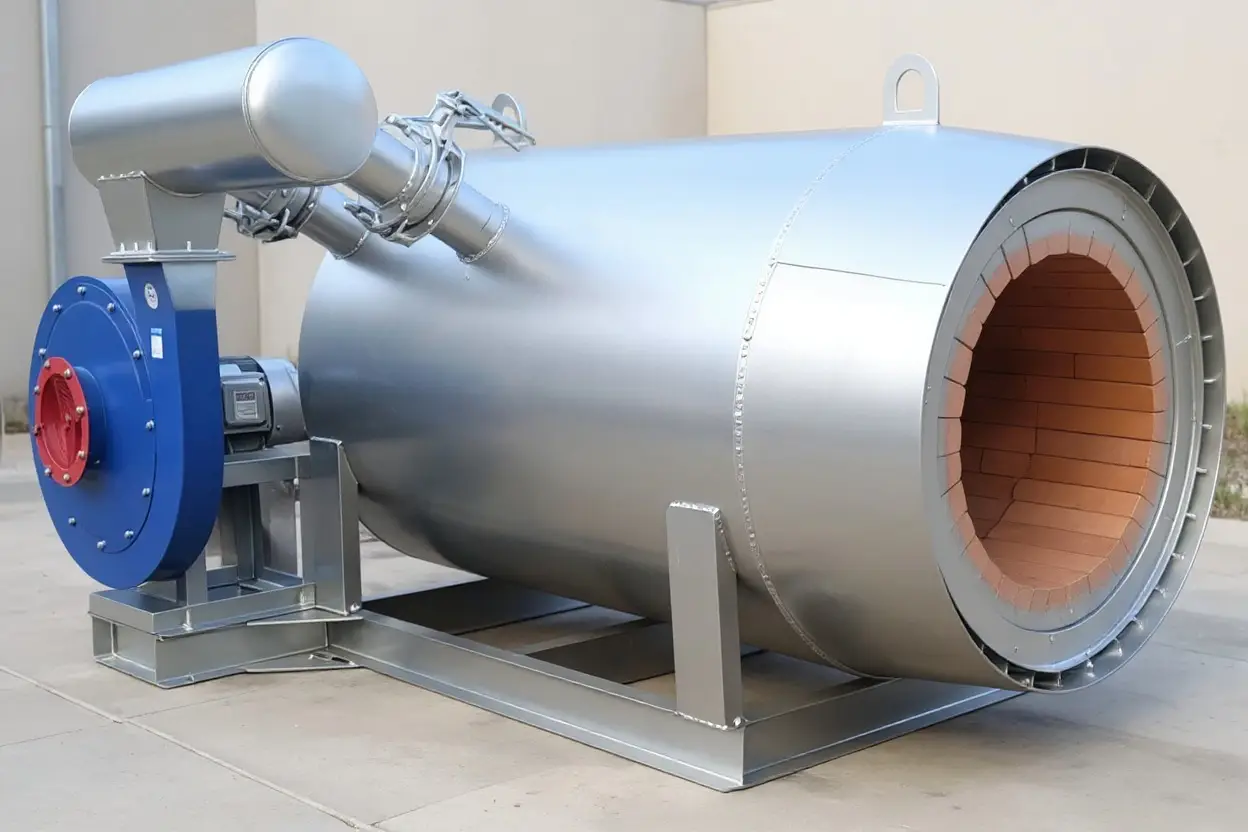Service
Pulverized coal burner
Pulverized coal burners, also known as pulverised coal burners, are specialized equipment designed to ensure the complete combustion of pulverized coal in a short time while generating high-temperature eddy currents. These burners play a vital role in various industrial processes by enabling efficient fuel burning and producing the necessary heat for operation

Pulverized coal burner
Pulverized coal burners can be classified based on their applications and structural design. By application, there are special pulverized coal burners for rotary kilns, burners designed specifically for boilers, and those used in asphalt mixing stations. Structurally, these burners are divided into swirl pulverized coal burners and direct pulverized coal burners. To meet both environmental standards and cost efficiency, advanced designs such as multi-channel gas burners, gas-gas burners, and oil-gas burners are employed. These models help reduce emissions while maintaining low operating costs.
The multi-channel pulverized coal burner features innovative designs with multiple air channels, typically five coal channels and four air channels, resulting in a high pulverized coal combustion rate. This design leads to energy savings through reduced combustion air consumption, lowering production costs. Additionally, the structure minimizes flame heat loss to surrounding brickwork, which extends the lifespan of furnace linings. These burners are also adaptable to a wide range of coal qualities, including inferior fuels, thus helping reduce fuel costs.
Over time, pulverized coal burners for rotary kilns have evolved from single air passage models to those with three or four air passages. While adding more air ducts generally improves combustion performance, it also increases structural complexity, cost, and the risk of deformation. Burners are categorized based on coal and air mixing methods into rotary flow and segmented burners. The segmented four-duct design divides air into external axial flow, coal air, internal axial flow, and internal rotational flow. However, this approach can lead to uneven coal-air mixing and increased wear in the coal air passages. An important performance indicator for these burners is the amount of primary air used, which influences combustion efficiency and emissions.
Swirling pulverized coal burners enhance combustion by employing a combination of direct and swirling jets along with balanced central airflow. This unique structure ensures thorough mixing of pulverized coal and combustion air, enabling rapid ignition and full combustion. Advanced four-duct swirling burners can reduce primary air consumption to as low as three to seven percent, making them highly efficient. These burners can handle a variety of fuels, including high-quality bituminous coal, low-quality coals, anthracite, petroleum coke, coal shale, waste tires, and even household waste. Their versatility makes them especially suitable for rotary kiln applications that require consistent and complete combustion.
These burners offer several key advantages in rotary kiln operations. They provide excellent fuel adaptability, especially when burning challenging fuels like anthracite or lower-grade coal, ensuring complete combustion with low excess air. This results in reduced emissions of carbon monoxide and nitrogen oxides, contributing to cleaner industrial processes. The burner’s flame shape promotes uniform and strong heat radiation across the firing zone, which supports optimal clinker formation and mineral crystal development. It also helps prevent dust blow-off, forms a stable kiln skin, and extends the service life of refractory bricks.
Additional feat uresimprove burner performance and environmental compliance. Annular intermittent spray technology maintains the burner’s shape under high temperatures, ensuring uniform and stable fuel jets and a consistent flame formation. The use of multiple smaller nozzles optimizes the spray pattern for better combustion control. Flame hood technology helps reduce peak flame temperatures, lowers harmful nitrogen oxide emissions, and promotes even temperature distribution inside the kiln. Flame stabilizers ensure a steady flame despite variations in coal feed rates, coal quality, or kiln conditions. Finally, the burner’s simple and adjustable design makes it easy to adapt to different operational environments and coal types.
In summary, pulverized coal burners deliver reliable, efficient, and environmentally friendly combustion solutions tailored for rotary kilns, boilers, and asphalt mixing stations. Their advanced designs facilitate fuel flexibility, improved performance, and reduced emissions, making them a valuable component in modern industrial heating systems. For those seeking efficient pulverized coal burners to optimize fuel usage and meet environmental regulations, these burners provide customizable and effective options for a wide range of applications.
